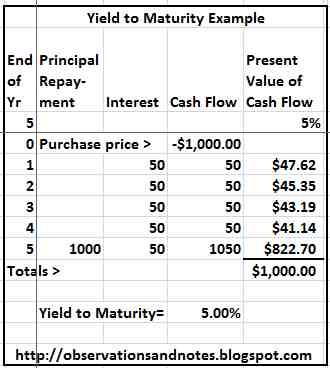Bond Duration How to Calculate Interest Rate Risk on a Bond
Post on: 13 Май, 2015 No Comment

Bond Duration is a measurement of how long it takes for the price of a bond to be matched by the money it generates. Here is a video overview, and you can find the longer text version below.
Measured in years, duration is important information for investors, because a bond with a higher duration also has more interest rate risk (more time for things to go wrong) and higher price volatility, compared to one with a lower duration.
However, higher risk means higher potential reward:
A bond with higher duration will have larger gains when interest rates fall than a similar bond with a lower duration.
The impact of a change in interest rates on a bond’s price, or its interest rate risk, is measured by the bonds duration. If a bonds duration is 8 (meaning that it will take 8 years for the bondholder to receive back the purchase price of the bond), you can also use that number to calculate how much the price will move if interest rates change.
In the case of a bond with a duration of 8, a 1% rise in market interest rates would cause the bond to decrease in value 8%. Conversely, a 1% fall in interest rate would cause the bond’s value to increase by 8%. The bigger a bonds duration number, the greater the impact an interest rate move will have a bond’s price, and therefore the higher the bonds interest rate risk.
Bond Duration is a very useful tool for estimation. However, it should be said that it tends to underestimate the change in market price as interest rate drop to near zero, and overestimate the impact on price for rising interest rates at high levels. This concept is called convexity.
Here are a couple of rules of thumb for bond duration:

- Interest bearing bonds will have durations less than their term (time to maturity )
- A zero-coupon bond (paying no interest) will have a duration equal to its term
- Bonds with higher higher current yields will tend to have lower durations than those with lower current yields, because an investor holding a bond with a higher current yield receives repayment for the bond faster. In other words, the higher the current yield, the lower the duration. Similarly, the longer the maturity, the higher the duration.
How bond duration changes with time
In a bond that pays interest, an interest payment that is made to an investor is no longer a future cash flow (it’s now already in the investor’s bank account). When such a payment is made, the duration of the bond will change. It can be recalculated by considering the amount of money still left to be generated. Whatever the result in terms of number of years, the time interval corresponding to the duration will shift forward in time: the date when the remaining cash flows match the price of the bond will now be later.
When buying a bond after its initial issue, duration for the new holder may not be the same as duration calculated by the original holder at the time of issue.
This lesson is part of our free Guide to the Basics of Investing in Bonds. To continue to the next lesson go here .














